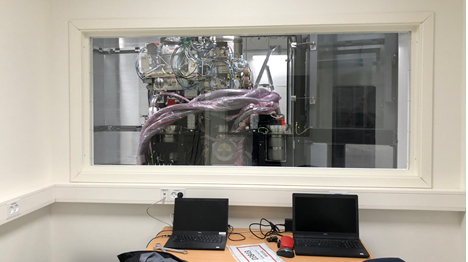The cryoEM facility EMBION receives EUR 1.8 million (DKK 13.3 million) from the Novo Nordisk Foundation for large equipment
With the grant from the Novo Nordisk Foundation, main applicant Poul Nissen and colleagues from the Department of Molecular Biology and Genetics and iNANO as well as partners at the Department of Biomedicine and the Department of Engineering will be able to establish an infrastructure for Cryo-Electron Tomography (ICE-T), which will also be made available to other institutions and industry. With this apparatus, molecular details can be explored directly in cells.

Poul Nissen and his colleagues will establish an Infrastructure for Cryo-Electron Tomography (ICE-T) which will be embedded in the Danish National Cryo-EM Facility – EMBION – where cryo-CLEM and high-end cryo-TEMs are available.
“Cryo-electron tomography (CET) bridges the gap between structural biology and cell biology,” explains Poul Nissen, “and it enables in situ structural determination of biomolecules and their complexes and mechanisms. This allows 3D biophysical modeling of biomolecular networks in a natural environment at 1-2 nm resolution, in favorable cases even close to 3 Å (1 Å is 10-10 meters and the order of magnitude of atoms and chemical bonds).
Poul Nissen: “With the grant for the ICE-T, we get a so-called cryo-FIB SEM apparatus, which with an ion beam can produce ultra-thin lamellae of cells and tissues that can be irradiated with the electron microscope, and a high-pressure freezing unit, so that these preparations can be handled in the process without damaging fine details. In addition, we get data management tools that facilitate advanced collection and analysis of large CET data sets.”
The equipment will be made available to a large user community through an online access portal, and technical staff will maintain the equipment and provide training and support to users. ICE-T will introduce a technological capacity at the forefront of cryo-EM and structural biology that enables Danish researchers from a broad background to enter CET research at full stride in highly competitive fields of research.
About the Novo Nordisk Foundation’s Research Infrastructure – Large equipment and facilities grants
With the Research Infrastructure Programme, the Novo Nordisk Foundation wishes to strengthen the Danish research environment within biomedicine, biotechnology, and natural and technical sciences by supporting the establishment and maintenance of infrastructures needed to achieve excellence in research and innovation.
The goal of the research programme is to: ensure that researchers have access to state-of-the-art research facilities, ensure that potential users have access to qualified technical assistance, ensure that the facilities and/or equipment is continuously developed and maintained, boost the nearby research environment.
For further information, please contact
Professor Poul Nissen
Department of Molecular Biology and Genetics/DANDRITE
Aarhus University, Denmark
pn@mbg.au.dk – +45 2899 2295
